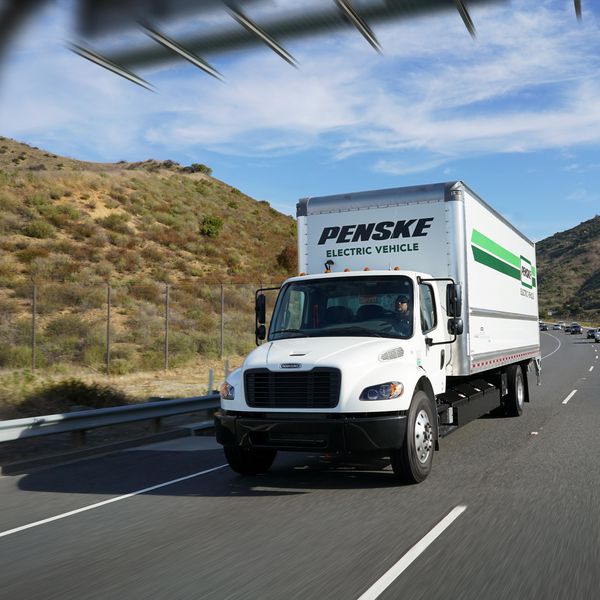OEMs May Use Electric Trucks to Meet GHG Phase 2 Requirements

The next stage of the Greenhouse Gas (GHG) Phase 2 emissions requirements is underway, and continued advances in electric trucks could change how original equipment manufacturers (OEMs) meet U.S. Environmental Protection Agency (EPA) and National Highway Traffic Safety Administration (NHTSA) requirements.
The rule does not mandate specific technologies but rather sets carbon and fuel efficiency performance standards for manufacturers to meet using numerous technology choices.
“In 2014, none of us thought electric trucks would be as probable as they are now,” said Mike Roeth, executive director of the North American Council for Freight Efficiency (NACFE). “Now the truck builders are saying, ‘Do I go put all this stuff on my diesel trucks, or do I work hard to develop my electric trucks even faster?’”
The GHG Phase 2 rule first brought changes to MY 2021 Class 8 trucks, and standards increase incrementally over time, becoming fully phased in with MY 2027 equipment.
EPA has also proposed new, stronger standards as part of the GHG Phase 3 rulemaking to promote clean air and reduce pollution from heavy-duty vehicles and engines starting in MY 2027. The proposed standards are performance-based, allowing each manufacturer to choose what set of emissions control technologies is best suited for their vehicle fleet to meet the standards.
Meeting GHG Requirements
OEMs can accomplish the regulation’s phase-down requirements in multiple ways, Roeth said. The first is to stop selling or sell fewer trucks with lower fuel efficiency, such as logging trucks. Next, they can sell a higher volume of trucks with systems they’ve already engineered, such as aerodynamics, axle ratios and tire pressure monitoring systems. They can also offer new technologies, such as turbo compounding. Finally, they can turn to advanced technologies, which is where electric trucks fit in.
Roeth said that even producing a small number of electric trucks can significantly affect an OEM’s total emissions. “They look at all the trucks you build as a manufacturer, and they average it,” he explained. “Instead of making that diesel truck more efficient and spending a lot of money on product development to bring that to market, I think the truck builders will focus on electric trucks. That may support a quicker turnover to electric.”
Natural gas technology can also help reduce NOx, Roeth said. Natural gas infrastructure was built out years ago, but it is receiving renewed interest. “The pull right now for natural gas is more around its environmental benefits,” he said, adding that there is more renewable natural gas than previously realized. “It is made from methane, which is bad when it is released into the environment.”
No matter what options OEMs turn to, Roeth said fleets should anticipate changes to their maintenance needs. “A new technology might have more or less maintenance. If you’re adding on skirts or a tail, those are parts that weren’t there before. There is a chance they’ll break or fail and need to be fixed,” he said, adding that electric trucks bring new technologies and will require new tools, new training and new skill sets.
As fleets consider their future purchases, Roeth suggests they stay apprised of the new technology and be open to using it. “Your grandfather’s truck might be more expensive over time because the OEMs have to deliver more fuel-efficient trucks,” he said.

